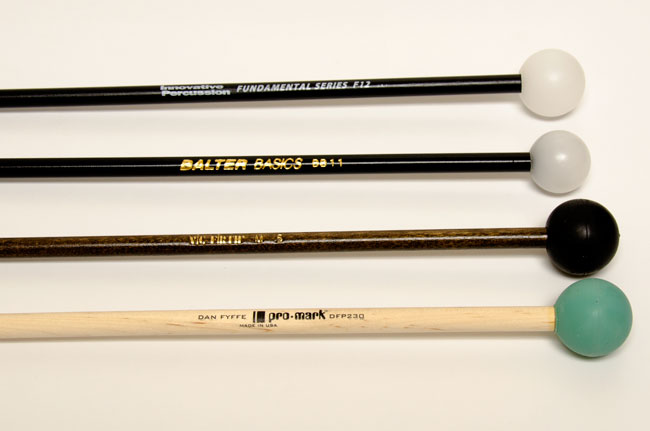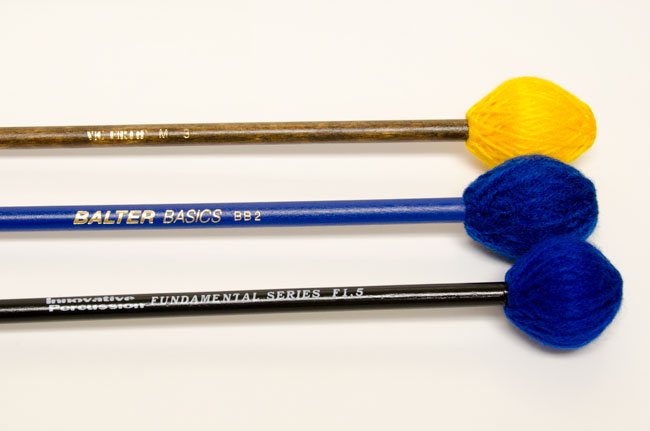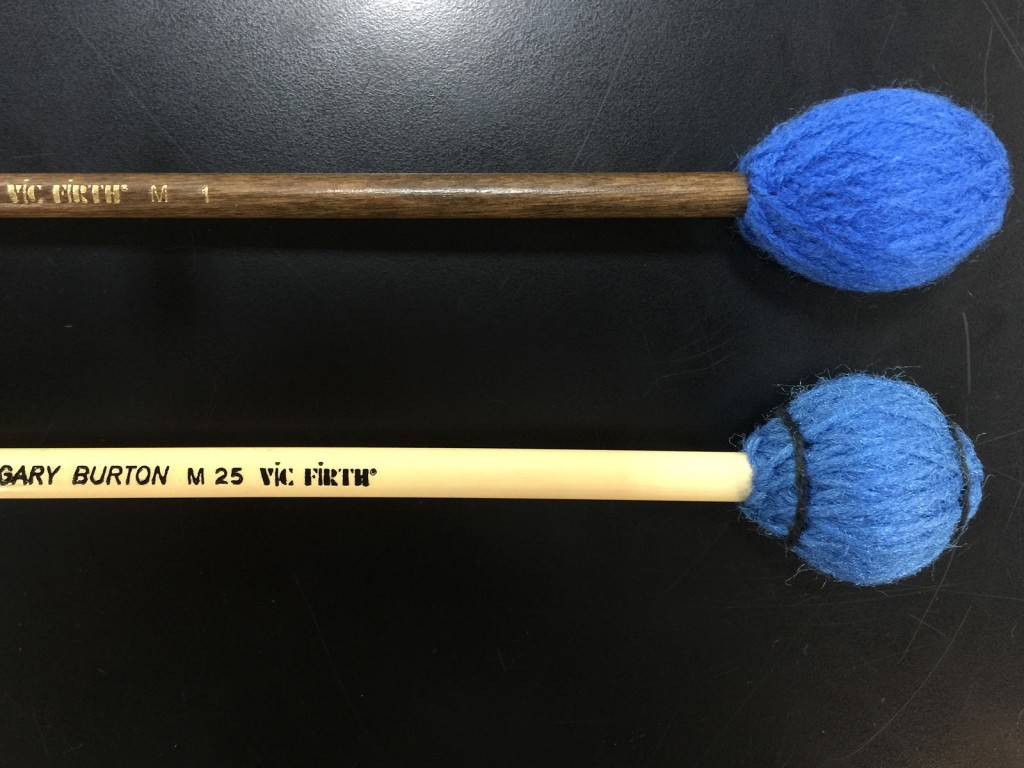What Mallets Does My Student Need? Beginners – FAQs
Welcome back to the Chops blog series on mallet FAQs (frequently asked questions). Today we’re going to answer one of the most common questions we receive: what mallets does my beginning band student need?
When your student enrolls in band as a percussionist, their director will have a requirement for the sticks and mallets they will need. These requirements normally include synthetic mallets for bells and xylophone, drum sticks and a stick bag. They may also include yarn mallets for marimba and vibraphone.
Mallets for bells (also known as glockenspiel) have a birch or rattan shaft and a synthetic head, usually made of plastic or rubber. For beginners, birch shaft mallets would be recommended. Many brands and models are available, but we recommend the following choices. These are also the standard mallets available in beginner stick/mallet prepacks.
Plastic and Rubber Models for Bells and Xylophone:
• Vic Firth M14 (plastic), M5 (rubber)
• Innovative Percussion F12 (plastic), F8 (rubber)
• Mike Balter BB11 (plastic), BB8 (rubber)
• Pro-Mark DFP640 (plastic), DFP230 (rubber)

Mallets for marimba and vibraphone have a birch or rattan shaft and a yarn or cord head. In addition to the marimba and vibraphone, these mallets can be used on other instruments such as suspended cymbals. Again, many brands and models are available, but we recommend the following yarn models for beginners.
Yarn Models for Marimba and Vibes:
• Vic Firth M2, M3
• Innovative Percussion F1.5, F2
• Mike Balter BB2, BB22
• Pro-Mark DFP730

In addition to mallets, your student’s director will require a set of drum sticks. Our most popular choices for beginners include:
• Innovative Percussion Lalo Davilla
• Vic Firth SD1
• Pro-Mark SD1
Those models are pictured here.

Mallet and stick choices are a matter of personal choice, and every director will have a different brand and model preference. Always check with them first before making a purchase. Please contact us for our recommendations or assistance finding mallets.
As your student progresses from a beginner to an intermediate and advanced percussionist their mallet collection should grow as well. Stay tuned, next time we’ll be discussing the mallets an intermediate percussionist should have.








